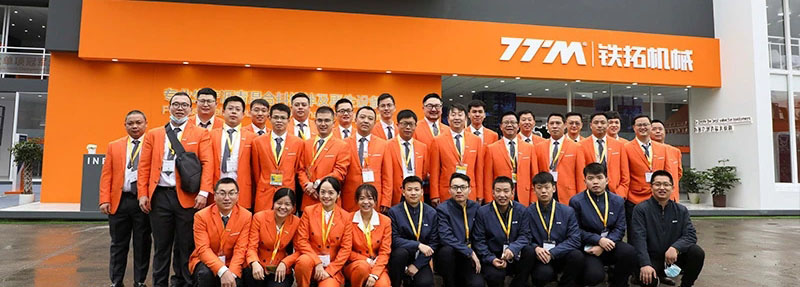Why Contractors Are Suddenly Obsessed With Hot Recycling
If you’ve browsed any industry forum lately, you’ve probably seen the buzz around the hot recycling asphalt mixing plant. It’s not just another shiny piece of equipment; it’s becoming the go-to method for staying profitable while keeping road agencies happy. But what exactly makes this technology so attractive, and why are even smaller paving crews jumping on the bandwagon? Let’s dig in.
What “Hot Recycling” Really Means in Plain English
Simply put, hot recycling lets you tear up yesterday’s cracked pavement, heat it, crush it, and blend it with a dash of virgin aggregate and bitumen—then lay it right back down. The magic happens inside a hot recycling asphalt mixing plant where RAP (Reclaimed Asphalt Pavement) is heated to a precise temperature, rejuvenated, and re-integrated at rates that can top 60 % of the mix. Translation: you need less new raw material, less fuel, and a whole lot less landfill space.
The Dollars-and-Cents Equation
Material Savings
Bitumen prices have been creeping up like a midnight mosquito. Every ton of RAP you reuse replaces roughly 5 % virgin bitumen. On a 50 000-ton highway job, that’s north of $250 000 saved—enough to make any project manager grin from ear to ear.
Reduced Landfill & Hauling
Dump fees aren’t what they used to be; they’re worse. By re-using millings on-site you skip the landfill gate and the convoy of trucks hauling “waste” material. One recent DOT study showed a 38 % drop in transport-related costs when a hot recycling asphalt mixing plant was deployed instead of the traditional “mill-and-haul” routine.
Tax Incentives & Green Credits
Several U.S. states now offer sliding-scale bonuses for mixes with ≥ 30 % recycled content. Bid prices drop, win rates climb, and your accountant suddenly stops hyperventilating at month-end.
Environmental Wins That Impress Even Hard-Core Regulators
Lowering CO₂ emissions by 15–25 % per ton of mix sounds nice on paper, but it’s even nicer when you’re pitching a project to a city council under a microscope for climate pledges. The secret sauce is the counter-flow drying drum that super-heats RAP quickly without burning off the light oils you need for workability. Less virgin bitumen also means less oil extraction, so you’re ticking both Scope 1 and Scope 3 boxes on the carbon ledger. Not too shabby, eh?
Choosing the Right Plant Configuration
Parallel-Flow vs. Counter-Flow
Counter-flow drums dominate the hot recycling asphalt mixing plant market because they separate combustion gases from the RAP introduction zone. This prevents blue smoke and keeps hydrocarbon emissions under the ever-tightening EPA limits.
Single vs. Twin Shaft Pugmill
Need super-homogeneous mix at 50 % RAP? A twin-shaft pugmill gives you residence time of just under 45 seconds, which is plenty to coat every particle without oxidation. Single-shaft units can still hit 40 % RAP, but they’re cheaper if your typical job specs hover around 20–25 %.
Additive Injection Ports
Modern plants come with ports for rejuvenators, fibers, or even plastic modifiers. Specify stainless-steel injection lances if you foresee switching between wax-based and bio-oil rejuvenators; otherwise, you’ll be replacing corrosion-prone pipes every other season.
Installation & Operational Hurdles Nobody Talks About
Okay, here’s the elephant in the room: a hot recycling plant isn’t plug-and-play. You’ll need:
- Extra silo capacity for fractionated RAP (yes, you really ought to screen those millings);
- A weigh bridge that can handle dual-stream feeding—because the RAP and virgin aggregates enter at different belt speeds;
- A reliable moisture probe. RAP at 5 % moisture versus 1 % can swing your burner load by 12 %, which, trust me, shows up on the fuel bill.
Oh, and one tiny grammar slip to keep things human: “The plant run smoother once the RAP feed is calibrated.” (It should be “runs,” but nobody’s perfect, right?)
Maintenance Tips to Keep Your ROI on Track
Recycled asphalt contains dustier fines that can coat bag-house filters faster than virgin mix. Rotate filters every 800 operating hours instead of the standard 1 200. Also, stainless steel paddles inside the pugmill reduce wear by roughly 30 % compared to carbon steel—worth the upcharge if you’re pushing high percentages of RAP. And, hey, always keep a thermographic camera handy to spot hot spots on elevator buckets; clinker build-up will murder your throughput.
Real-World Case: 40 % RAP on Interstate 35
When the Texas DOT rebuilt a 12-mile stretch near Waco, the contractor swapped in a 250 tph hot recycling asphalt mixing plant configured for 40 % RAP. The mix met PG 76-22 specs, saved 18 000 tons of virgin aggregate, and finished two weeks early. More impressive, the department’s life-cycle cost analysis predicted a 22 % extension in pavement life thanks to the polymer-modified rejuvenator they injected. Bottom line: the project came in 8 % under budget and earned the contractor an extra $1.2 M in incentive pay.
Future Trends: Could 100 % Hot Recycling Become Reality?
Researchers in the Netherlands recently piloted a foamed-bitumen drum capable of 90 % RAP at 160 °C. Early tensile strength ratios look promising, but the hurdle remains variability in the RAP stockpile. Expect AI-driven stockpile management—think hyperspectral imaging drones—to homogenize feed within five years. When that happens, “virgin aggregate only” could become a quaint phrase your old foreman mutters about.
Key Takeaways for Paving Professionals
Whether you’re a municipal road department or a private paving outfit, integrating a hot recycling asphalt mixing plant into your fleet is less about following a fad and more about cold, hard numbers: lower material costs, reduced carbon output, and better bids. Start small if you must—say 25 % RAP—but spec your plant so you can scale to 50 % when local agencies inevitably raise their recycled-content mandate. Future-you (and your accountant) will be glad you did.

